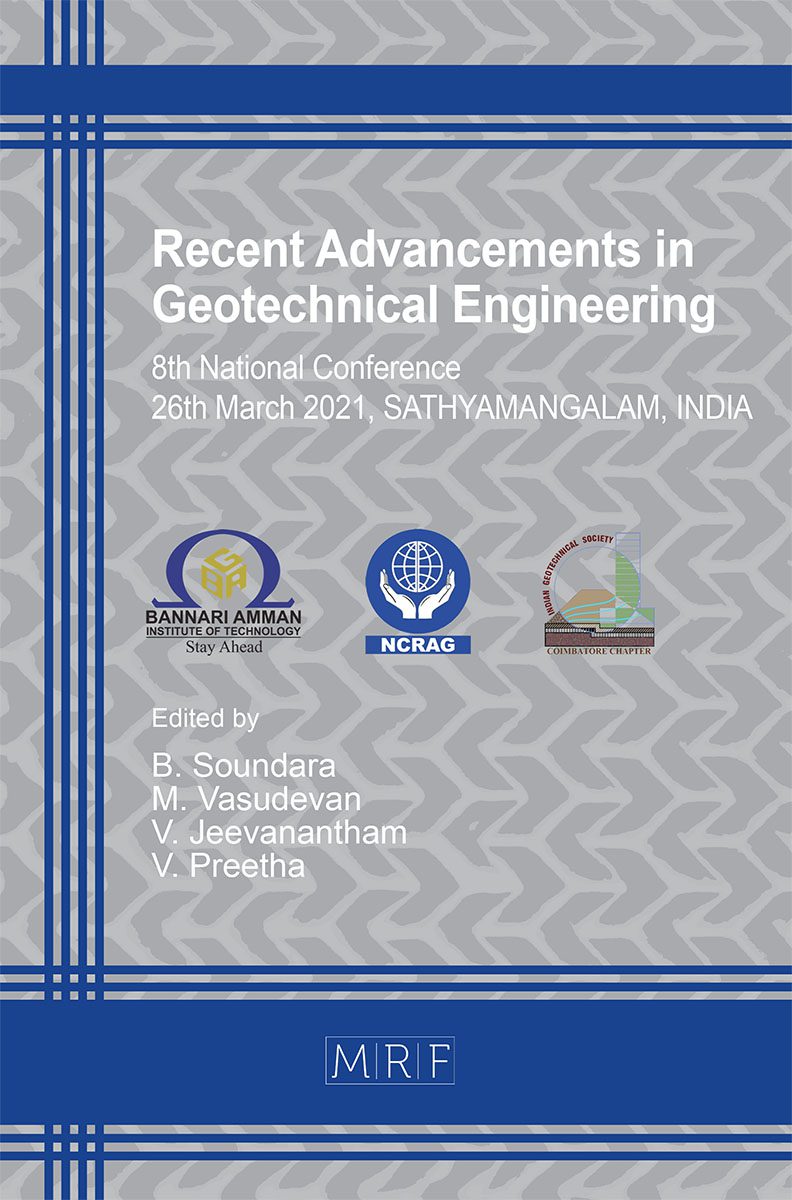Broad-Spectrum of Sustainable Living Management Using Green Building Materials- An Insights
R. Sivarethinamohan, S. Sujatha
download PDFAbstract. Owing to the recurrent modifications in the lifestyle and demands of humans the regular life of buildings is decreasing whereas the demolition or renovation of the buildings increases. Building materials and their components ingest just about 40 percent of world-wide vigour per annum in their life segments such as fabrication and procurement of building materials, construction and demolition. The development of the construction industry completely relies on the deployable resources. To abate the consumption of construction materials in current years, the construction industry has established an environmental track, which wishes to use naturally available materials. Reviving such technology, further developing this technology green building materials are paramount for constructing green buildings. Such a green-building constructional model does not require energy contributions frequently for production. The advantage of reducing the energy used in manufacturing, increases strength. Green Building material is one which utilizes less water, optimizes energy efficiency, conserves natural resources, generates less waste, produces less carbon dioxide emissions and provides improved space for inhabitants as compared to conventional buildings. It includes environmental, economic, and social benefits as well. This paper aims to provide knowledge about some of the green building materials that help for sustainable living. These elucidations can obligate a significant influence in contemporary construction owed to the escalation in the charges of traditional construction materials.
Keywords
Life Cycle Assessment, Environmental Benefit, Economic Benefit, Sustainable Construction
Published online 8/15/2021, 8 pages
Copyright © 2021 by the author(s)
Published under license by Materials Research Forum LLC., Millersville PA, USA
Citation: R. Sivarethinamohan, S. Sujatha, Broad-Spectrum of Sustainable Living Management Using Green Building Materials- An Insights, Materials Research Proceedings, Vol. 19, pp 1-8, 2021
DOI: https://doi.org/10.21741/9781644901618-1
The article was published as article 1 of the book Recent Advancements in Geotechnical Engineering
![]() Content from this work may be used under the terms of the Creative Commons Attribution 3.0 licence. Any further distribution of this work must maintain attribution to the author(s) and the title of the work, journal citation and DOI.
Content from this work may be used under the terms of the Creative Commons Attribution 3.0 licence. Any further distribution of this work must maintain attribution to the author(s) and the title of the work, journal citation and DOI.
References
[1] R.M.Pulselli, E. Simoncini, F.M.Pulselli and S.Bastianoni, Energy analysis of building manufacturing, maintenance and use: building indices to evaluate housing sustainability, Energy Build. 39 5 (2007) 620–8. https://doi.org/10.1016/j.enbuild.2006.10.004
[2] R.Ries, M. Bilec and N.M.Gokhan and K.L.Needy, The economic benefits of green buildings: a comprehensive case study , Eng. Eco. 51 3 (2006) 259–95. https://doi.org/10.1080/00137910600865469
[3] J.E.Fernandez, Material Architecture: Emergent Materials for Innovative Buildings and Ecological Construction ,Architectural Press: Amsterdam, Boston, Elsiever, 2006
[4] A.Karolides, Green Building Approaches Green Building: Project Planning and Cost Estimating,W iley, E-Book, Third Edition, 2002.
[5] D.Sherwin, Reducing the cost of green, J. Green Build. 11 (2006) 46–54. https://doi.org/10.3992/jgb.1.1.46
[6] G.Polat and A.P. Gurgun ,Identification of Material-related Risks in Green, Building Procedia Eng. 196 (2017) 956-963. https://doi.org/10.1016/j.proeng.2017.08.036
[7] I.Cooper, Which focus for building assessment methods: Environmental performance or sustainability?, Build. Res. Inf. 27 4-5 (1999) 321-331. https://doi.org/10.1080/096132199369435
[8] B.V. Venkatarama Reddy and K.Jagadish, Embodied energy of common and alternative building materials and technologies, Energy Build. 35 2 (2003) 129–37. https://doi.org/10.1016/S0378-7788(01)00141-4
[9] A.Muse and J.M. Plaut, 2006 An inside look at LEED: experienced practitioners reveal the inner workings of LEED, J. Green Build. 1 1 (2006) 3–8. https://doi.org/10.3992/jgb.1.1.1
[10] L.Bourdeau, Agenda 21 on sustainable construction, CIB Report Publication, 237,1999
[11] P.Wu and S.P.Low, Barriers to Achieving Green Precast Concrete Stock Management–a Survey of Current Stock Management Practices in Singapore, J. Constr. Manag. 14 (2014) 78-89. https://doi.org/10.1080/15623599.2014.899126
[12] P.De.Luca, I. Carbone and J.B.Nagy, Green building materials: a review of state Of the art studies of innovative materials, J. Green Build. 12 4 (2017) 141 -161. https://doi.org/10.3992/1943-4618.12.4.141
[13] B.Ashuri and A.Durmus-Pedini, An Overview of the Benefits and Risk Factors of Going Green in Existing Buildings, J. Facil. Manag. 1 (2020) 1-15
[14] H.Ali and S.Alnusairat, Developing a Green Building Assessment Tool for Developing Countries–Case of Jordan, Build Environ . 44 5 (2009) 1053-1064. https://doi.org/10.1016/j.buildenv.2008.07.015































